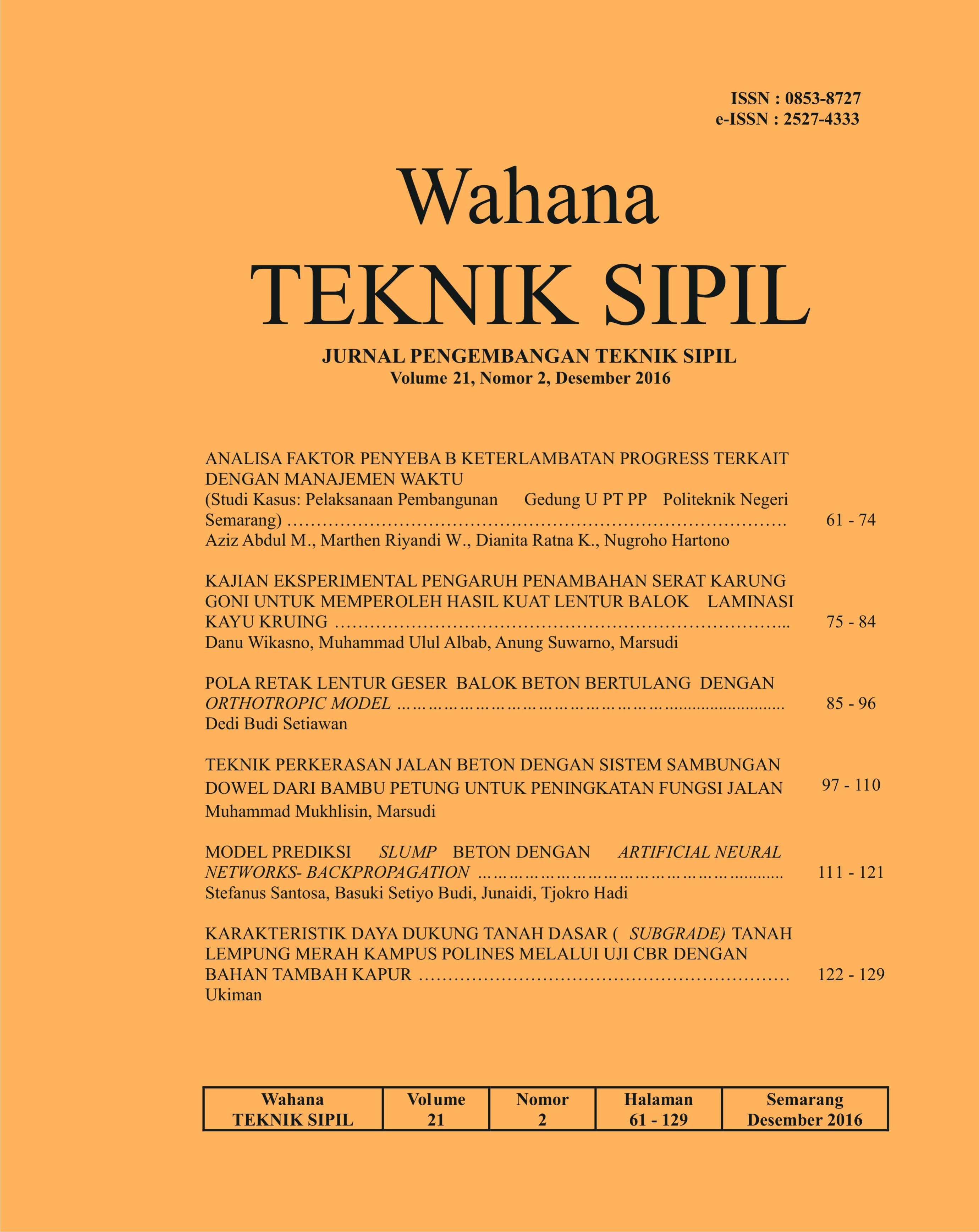TEKNIK PERKERASAN JALAN BETON DENGAN SISTEM SAMBUNGAN DOWEL DARI BAMBU PETUNG UNTUK PENINGKATAN FUNGSI JALAN
DOI:
https://doi.org/10.32497/wahanats.v21i02.834Abstract
The widening of concrete pavement requires special maintenance, especially in the process of curing and implementation before the concrete is fully hardened. Some of the efforts undertaken include waterlogging on concrete surfaces, wet jute blankets, water spraying and so on. Once concrete pavement roads are operated, special attention should be paid, especially with regard to the vehicle load that will pass through the road. For roads in the township, often not prepared for heavy vehicles, but in reality if the community will build houses or house maintenance then that pass through the road is often a truck filled with sand or stone. By looking at the phenomenon then the road that is only prepared for light vehicles will quickly experience damage. Therefore, in this community service in doing the tutorial how the procedure of widening the concrete road as well as the direct practice of widening the broken concrete road with the dowel connection system of bamboo petung. The enthusiasm of the community was great as it proved by the many who came to follow the tutorial and at the same time carry out the work. In the end people can take a good lesson on the casting process and the damaged roads can be repaired.
Kata Kunci : tulangan bambu, perkerasan beton, pelebaran.
Downloads
Published
Issue
Section
License
Authors who publish with this journal agree to the following terms:Authors retain copyright and grant the journal right of first publication with the work simultaneously licensed under a Creative Commons Attribution License that allows others to share the work with an acknowledgement of the work's authorship and initial publication in this journal.
Authors are able to enter into separate, additional contractual arrangements for the non-exclusive distribution of the journal's published version of the work (e.g., post it to an institutional repository or publish it in a book), with an acknowledgement of its initial publication in this journal.
Authors are permitted and encouraged to post their work online (e.g., in institutional repositories or on their website) prior to and during the submission process, as it can lead to productive exchanges, as well as earlier and greater citation of published work (See The Effect of Open Access).






